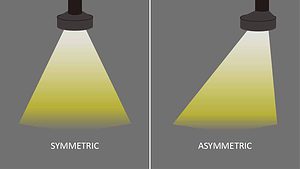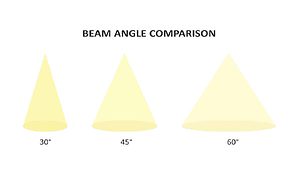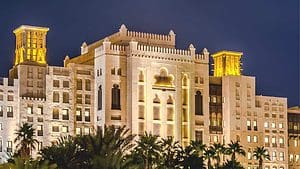Frankly, there is no other business as dependent on aesthetically pleasing lighting as a jewelry store.
But how can you excel in lighting your jewelry store to stand out from the rest of the crowd? Don’t worry. We’ve prepared this guide to help you choose the perfect lighting amount, color, temperature, and design for your jewelry project.
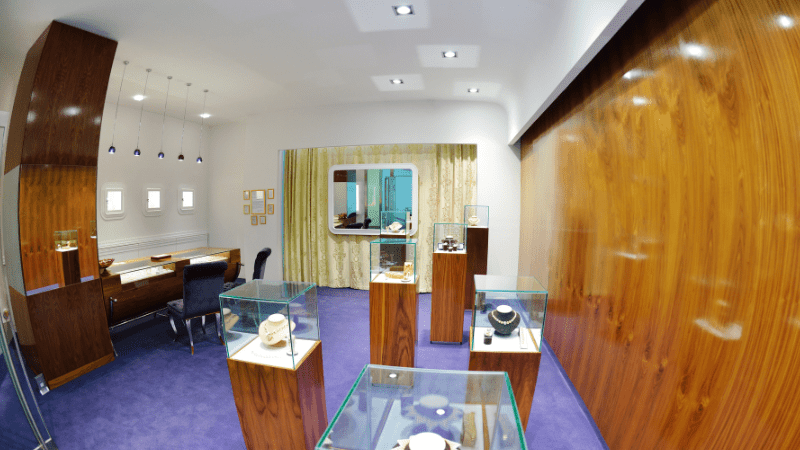
Importance Of Lighting A Jewelry Store
Lighting is no doubt a crucial part of any commercial jewelry shop. Jewels are all about fashion, glamour, sparkle, and elegance. People want jewelry that not only looks but feels amazing too.
However, lighting the jewelry isn’t about increasing the intensity and brightness of the lights. This approach will create the dreaded glare and cause inconvenience for the customer. Diminishing your sales in return.
Poor jewelry display lighting can ramp up electricity bills and operational costs. Combine this with poor sales, and your project will fail.
6 Critical Things to Consider When Lighting the Jewelry Shop
1. Calculate the Lighting Requirement
How many light fixtures do you need? Is there an easy way to find out? Yes, absolutely! First, we will calculate the number of lumens(lm) or foot candles(fc) your place needs for proper illumination.
Check out this helpful guide if you don’t know what lumens are. Click here.
In short, lumen and footcandles are units used to measure the illumination produced by a light source. The higher the lumens are, the brighter the place shall be.
One footcandle = One lumen per sq. ft
First, start by calculating the length and width of your place. Multiply both values and get the total area of your jewelry shop.
Experts recommend 200 lumens per square foot for a well-lit jewelry store. Now, multiply your shop area by two hundred, and you’ll get the total amount of lumens per sq. ft required for a well-lit store.
Once you get the total value, divide it by an average lumen rating of a single bulb, and you’ll have the number of lamps needed for the place.
Suppose your shop covers an area of 300 sq. ft ( 20 by 15 ft). Your lighting requirement will be 60,000 lm (300*200). An average 12 W LED bulb gives off 1100 lumens. So, you require at least 55 fixtures (60000/1100) to light the general area in your jewelry store.
However, this doesn’t include the showcase lighting. To include that, repeat the above-mentioned steps but use the showcase area instead of the whole shop.
Ensure the lighting is 9 ft above the showcases and visitor area. If the ceiling is too high, you can use different lighting styles, like chandeliers and pendant lights, to counter the height.
2. Types of Lighting Technologies
Jewelry shops commonly use fluorescent, halogen, metal halide, and LED lights. Traditionally, halogens and metal halides were used because of their warmer color temperature and high CRI values.
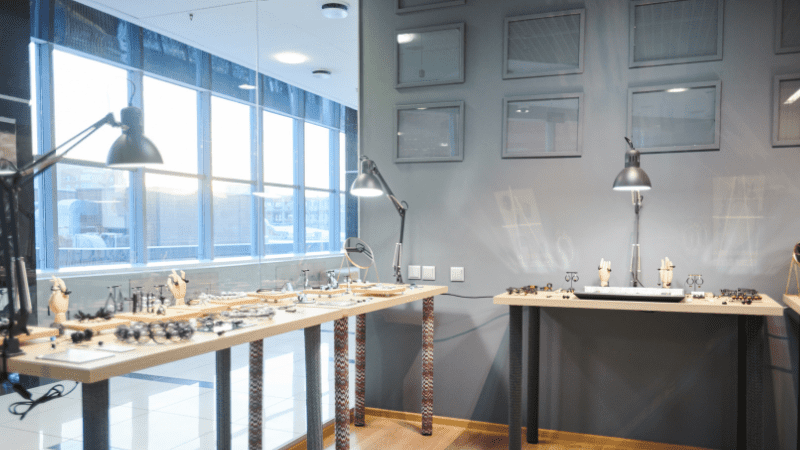
However, halogen lighting tends to heat up a lot and can reach 150 ℃ (300 ℉). Multiply it with tens of fixtures, and the heat rises to unbearable temperatures. You need proper air conditioning to counter this heat.
Metal halides heat up less, but they need 3 to 4 minutes to light up fully. This is going to be an issue if there are frequent power outages.
Fluorescent lights work well with transparent gems like diamonds. However, they fail to bring out gold and silver jewelry glitter.
LEDs are relatively newer technology and have a wide variety of color temperatures and high CRI values. These lights also produce less heat and consume less energy. We recommend LEDs lights as they have high ROI. More on it in a later section.
3. Types Of Lighting Fixtures
Jewelry stores usually have specific light reserved for a certain area. This is where your aesthetic sense comes into play.
You can use chandeliers, pendants, and linear and recessed lights for the general area. Make sure they are properly spaced around 2 ft to get a nice flood of light. The primary purpose of this lighting is to create a warm and welcoming ambiance for the customers.
Other popular choice includes using spot and track lights to illuminate the showcases. Inside the showcase, you can also use halides and LEDs to light the jewelry.
4. Select Lights That Compliment the Jewelry
The quality of a lighting design depends on how good the color temperature and CRI values of the light are.
Temperatures
Color temperature refers to the shade of the color the light emits, and it ranges from 2000 to 6000 Kelvin. Lower-range lights tend to emit yellowish lights, while you’ll observe slight bluish and cooler shades of lights at the higher end of the spectrum.
CRI
Color rendering Index (CRI) refers to a light source’s ability to show an object’s color correctly. Sunlight has the highest CRI value of 100, while artificial lighting scores between 50 to 95.
What Is the Best Lighting for Diamonds?
Diamonds sell themselves if they dazzle and sparkle as they are supposed to. Poor lighting can take away their natural glitter leaving your customer uninterested. We recommend separate lighting for diamonds and other transparent gems. Use lighting temperatures between 4000 K to 6200K for the diamonds to truly shine.
What Is the Best Lighting for Gold?
People often say,” do proper lighting for diamonds, and the rest will take care of itself” This is not a good approach. Gold, silver, and colored gems show off vibrant colors under 2000k to 3500K lighting temperature.
Moreover, never compromise on the CRI values, and always target 90 or above.
5. Draw Your Customer to The Prize
Many jewelers fail to consider that the main attraction is the jewelry and not the overall area. They do excessive lighting in the general area, which washes out the appeal of the jewelry and gems in the showcase.
In simpler terms, the shop’s overhead lighting should be slightly lower than the lighting inside the showcases. Here is how you can achieve this.
Ambient Lights
Ambient lights are used to set the right mood and aura of the place. Making the area welcoming and cozy. Illumination here is the by-product. These lights use colors, temperatures, and wall washing to enhance the place’s charm. Ambient lights will also remove unnecessary glare and shadows.
Accent Lights
Accent lights are perfect for jewelry and precious gemstones as they draw attention to a special feature in the room. In our case, we have plenty of cabinets and jewelry display cases to be creative.
6. Proper Light Layering
Never use color two different color temperatures in contrast at a single place. The light falling from the overhead fixture should have a matching or somewhat similar color temperature in the showcase, and that’s called proper layering. This is crucial when lighting jewelry cases.
Best Lighting Type for The Jewelry Shop—Our Verdict
We have discussed different lighting technologies and commented on their strengths and weaknesses. But which is the best suited for a jewelry store? Experts say You can double your profits by simply shifting to led lighting. And there is evidence to support this claim.
Cost and energy efficient
LEDs consume only about 3% of the energy compared to older compact fluorescent lamps (CFL), halogen, and halide lights. Expand the usage throughout the year, and you’ll get a return on investment within 15 months of installing them. LEDs also produce less heat, so air conditioners work less than shops with halogens.
Color Spectrum
Diamonds, Gold, Silver, and gemstones look best in natural daylight. Of course, we can’t replicate the sun in real life, but we can come close. LEDs have the closest color spectrum to sunlight, which can bring out the best look in the jewelry.
Conclusion
In this guide to jewelry store lighting, we have discussed all the aspects you need to consider for the project. We have laid out the ways to calculate the lighting requirement and shared tips to enhance the aesthetics of the place while keeping the lighting practical.
Even if you hire a lighting designer, this guide will help you collaborate much better with the contractor and arrange high-quality lighting for your store.
Want To Buy the Best Lights for Your Jewelry Store?— Try RC Lighting
We have presented tips to design perfect lighting for a jewelry store, but you can’t achieve it will low-quality luminaires. RC lighting brings premium quality lighting products manufactured in a state-of-the-art facility under the supervision of experts.
Our LED light fixtures come in various designs customizable to your project. We deliver adjustable, recessed, pendants, self-mounted, spot, and track LED lights to satisfied customers worldwide.
Moreover, our quality meets all the international standards while maintaining competitive market prices.
RC lighting is just the place if you want high-quality, long-lasting, and economical luminaires for your project. Our 24/7 customer service is here to serve you. So, what are you waiting for? Get your FREE quote NOW.

